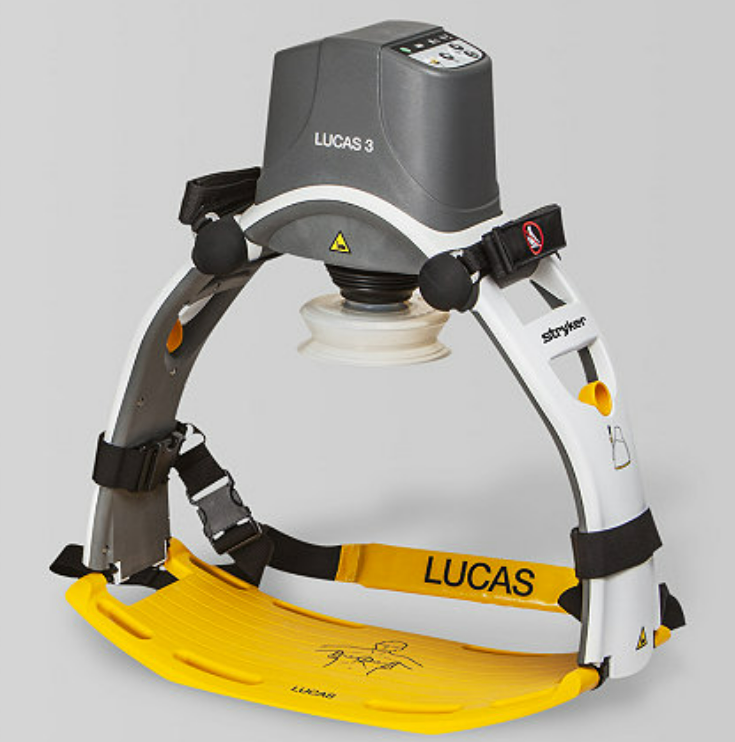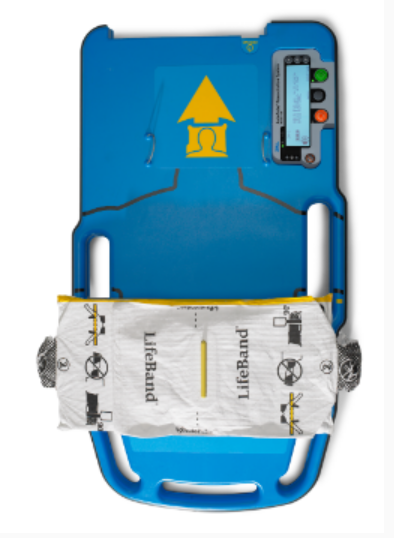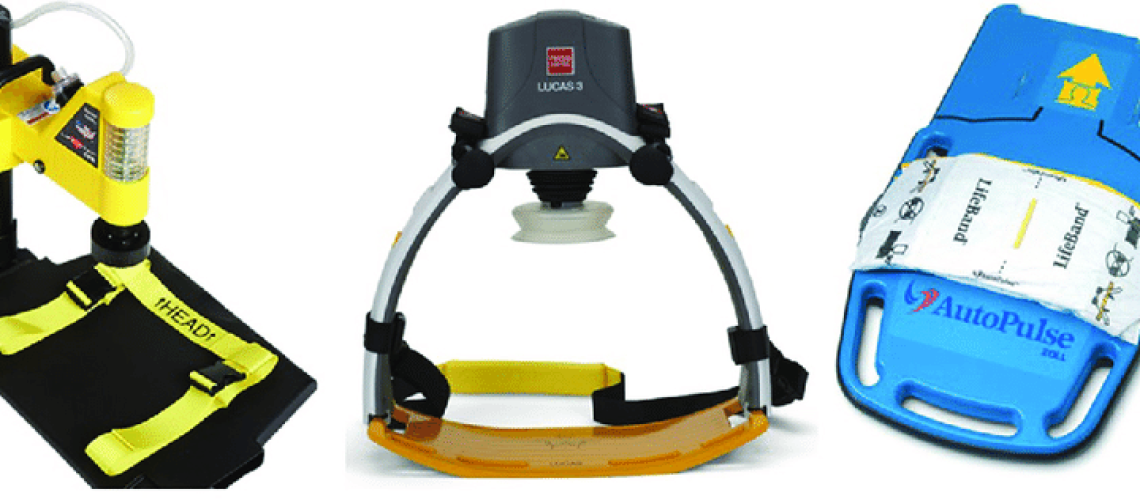High-quality cardiopulmonary resuscitation (CPR) remains the cornerstone of cardiac arrest management. Despite decades of technique and protocol improvements, survival rates after out-of-hospital cardiac arrest (OHCA) remain low, varying from 5% to 50% depending on studies and contexts. In North America, the incidence of EMS-treated OHCA is estimated at 52.1 cases per 100,000 person-years [1]. More concerning, over half of survivors experience varying degrees of neurological sequelae [2].
The American Heart Association (AHA) and European Resuscitation Council (ERC) emphasize three critical factors for improving survival:
– High-quality CPR with minimal interruptions in chest compressions
– Early defibrillation
– Post-cardiac arrest therapeutic hypothermia
Manual CPR and its Limitations: An Alarming Reality
Provider Fatigue: An Underestimated Problem
Recent data on manual CPR quality is alarming. The landmark study by Abella et al. [3] revealed that:
– 36.9% of chest compressions are performed at rates below 80/minute
– 21.7% are delivered at less than 70/minute
– Performance significantly degrades after only 1-2 minutes of CPR
Even more concerning, Hightower et al.’s work [4] demonstrates rapid quality deterioration:
– 92% correct compressions during the first minute
– 67.1% during the second minute
– 39.2% during the third minute
– Only 18% after 5 minutes
CPR Interruptions: Major Impact on Survival
Wik et al.’s study [5] highlighted that during OHCA:
– Chest compressions are interrupted 48% of the time on average
– These interruptions primarily occur during:
* Rhythm analysis
* Defibrillation attempts
* Provider changes
* Airway management
Compression Quality: Standards Rarely Met
Current guidelines recommend:
– Rate of 100-120 compressions/minute
– Depth of 2-2.4 inches (5-6 cm)
– Complete chest recoil
– Minimal interruptions
However, an observational study including 67 in-hospital cardiac arrests [6] reveals:
– Rate below 90/minute in 27% of cases
– Insufficient depth in 37% of cases
– No-flow time averaging 24% of total resuscitation duration
The Rise of Mechanical Devices: A Potential Solution
Two main technologies have emerged:
Piston Devices
– Example: LUCAS (Lund University Cardiac Assist System)
– Operation: Active sternum compression/decompression
– Constant rate of 100/minute
– Standardized depth

Load-Distributing Bands
– Example: AutoPulse
– Operation: Circumferential thoracic compression
– Force distribution over larger surface area
– Theoretical reduction in costal injury risk

These devices offer several theoretical advantages:
– Maintenance of consistent rate and depth
– No fatigue
– Staff availability for other tasks
– Enhanced safety during transport
Evidence Review: Mixed Results
Animal and Physiological Studies
Animal model studies show encouraging results:
– Improved cerebral and coronary blood flow
– Increased coronary perfusion pressure
– Better survival in prolonged ventricular fibrillation models
Randomized Clinical Trials
The ASPIRE trial [7], including 767 patients, showed:
– No difference in 4-hour survival (28.5% vs 29.5%)
– Trend toward worse hospital survival with AutoPulse (5.8% vs 9.9%)
– Poorer neurological outcomes (3.1% vs 7.5% good recovery)
Liu et al.’s meta-analysis [8] of 8501 patients showed no significant difference in:
– Return of spontaneous circulation (33.3% vs 33.0%)
– Survival to admission (22.7% vs 24.3%)
– Survival to hospital discharge (8.6% vs 10.7%)
– 30-day survival (7.5% vs 8.5%)
Practical Applications in Emergency Medicine: Optimizing CPR in the Hospital Setting
The Mechanical CPR Paradox
While studies don’t demonstrate clear superiority of mechanical devices, several clinical scenarios may warrant their use:
-
-
- Limited Staffing
-
During night shifts or in smaller facilities, studies show:
– Provider-to-patient ratios can drop to 1:4
– CPR quality significantly decreases after 2 minutes
– Interruptions are more frequent during provider changes
-
-
- Prolonged CPR
-
Recent data indicates:
– 35% of cardiac arrests require >30 minutes of CPR
– Provider fatigue becomes critical after 10 minutes
– Compression quality drops from 90% to less than 20% during this period
Optimizing Manual CPR
Continuing Education
Studies demonstrate:
– Performance decreases 40% six months post-initial training
– Real-time feedback improves compression quality by 25%
– Regular simulation sessions increase ROSC rates by 30%
Organizational Strategies
Evidence-based recommendations:
– Provider rotation every 2 minutes
– Use of visible timers
– Designation of a quality-monitoring team leader
Integrating Mechanical Devices: A Pragmatic Approach
Preferred Indications
-
-
- Transport Situations
-
– 60% reduction in interruptions during movement
– Enhanced provider safety
– Maintained compression depth despite motion
-
-
- Simultaneous Procedures
-
– Cardiac catheterization
– ECMO initiation
– Thrombolysis
Implementation Protocol
Success factors include:
– Intensive initial training (minimum 4 hours)
– Regular practice (monthly)
– Device placement time <20 seconds
– Integration into existing algorithms
Economic and Organizational Aspects
Cost-Effectiveness Analysis
Recent North American data:
– Average device cost: $15,000-$20,000
– Lifespan: 5-7 years
– Cost per use: approximately $200
– Potential staff savings: 1.5 FTE per prolonged cardiac arrest
Impact on Care Organization
Documented organizational benefits:
– 40% reduction in required staff
– 25% decrease in post-intervention stress
– 35% improvement in intervention documentation
Practical Recommendations for ED Staff
Criteria for Choosing Between Manual and Mechanical CPR
Favor Mechanical CPR when:
– Limited staff (<4 providers)
– Transport required
– Interventional procedure planned
– Expected duration >20 minutes
Maintain Manual CPR when:
– Full team available
– Recent training
– Real-time feedback available
– Expected short duration (<10 minutes)
Quality Monitoring
Key indicators to track:
– Chest compression fraction (target >80%)
– Average depth (2-2.4 inches)
– Rate (100-120/min)
– Device deployment time (<30 sec)
Conclusion
The manual versus mechanical CPR controversy reflects the complexity of modern resuscitation. Current data suggests the question isn’t choosing between methods but knowing when and how to optimally use each.
Key takeaways:
-
- Quality manual CPR remains the gold standard but is rarely maintained over time
- Mechanical devices offer reliable alternatives in specific situations
- Ongoing training and quality monitoring are essential regardless of method
References:
- Nichol G, et al. Regional variation in out-of-hospital cardiac arrest incidence and outcome. JAMA 2008
- Herlitz J, et al. Prognosis among survivors of prehospital cardiac arrest. Ann Emerg Med 1995
- Abella BS, et al. Chest compression rates during cardiopulmonary resuscitation are suboptimal. Circulation 2005
- Hightower D, et al. Decay in quality of closed-chest compressions over time. Ann Emerg Med 1995
- Wik L, et al. Quality of cardiopulmonary resuscitation during out-of-hospital cardiac arrest. JAMA 2005
- Abella BS, et al. Quality of cardiopulmonary resuscitation during in-hospital cardiac arrest. JAMA 2005
- Hallstrom A, et al. Manual chest compression vs use of an automated chest compression device. JAMA 2006
- Liu M, et al. Mechanical chest compression with LUCAS device does not improve clinical outcome. Medicine 2019
- Gates S, et al. Mechanical chest compression for out of hospital cardiac arrest. Resuscitation 2015
- Ong ME, et al. Cardiopulmonary resuscitation interruptions with use of a load-distributing band device. Ann Emerg Med 2010
- Perkins GD, et al. Mechanical versus manual chest compression for out-of-hospital cardiac arrest. Lancet 2015
- Rubertsson S, et al. Mechanical chest compressions and simultaneous defibrillation vs conventional CPR. JAMA 2014
- Westfall M, et al. Mechanical versus manual chest compressions in out-of-hospital cardiac arrest: a meta-analysis. Crit Care Med 2013
